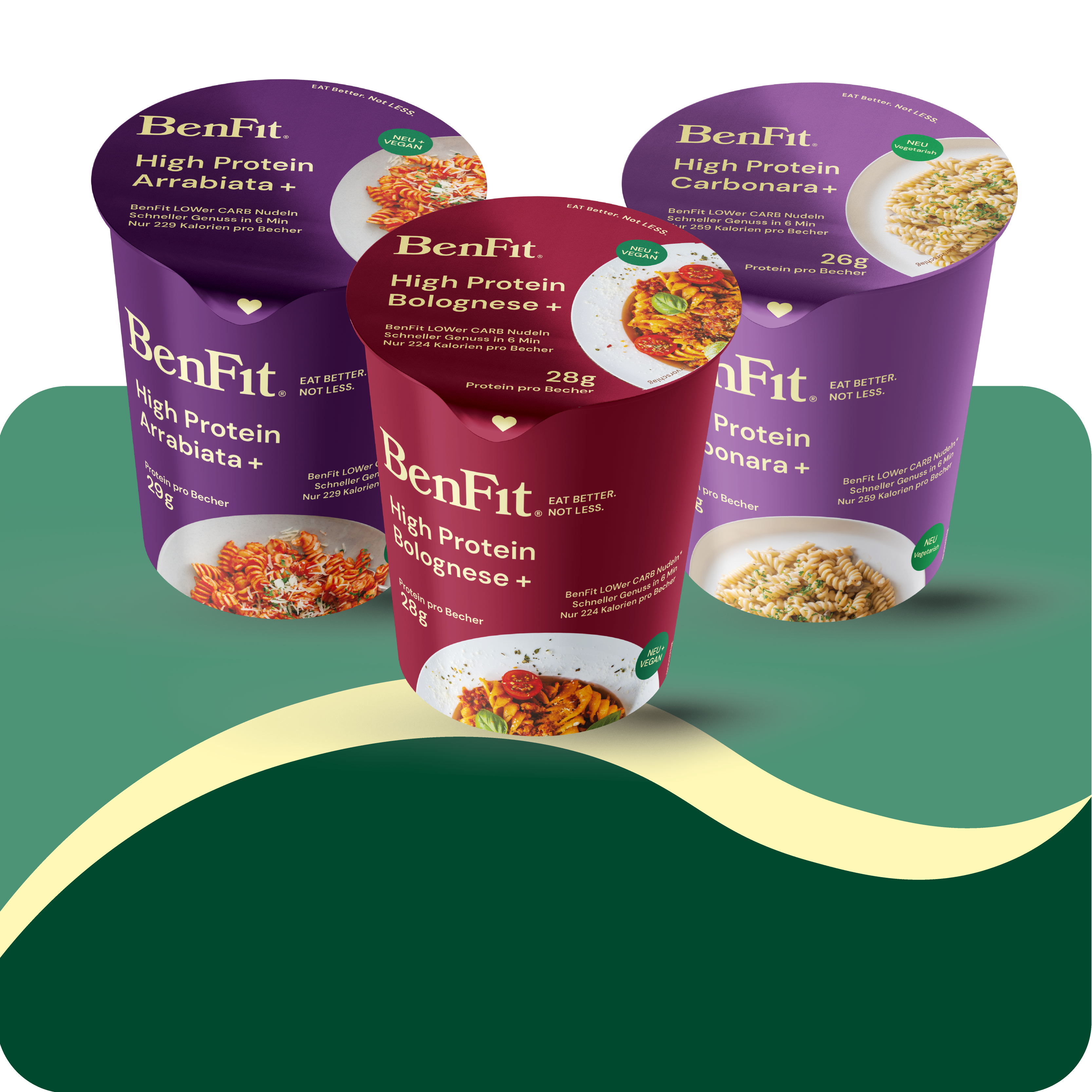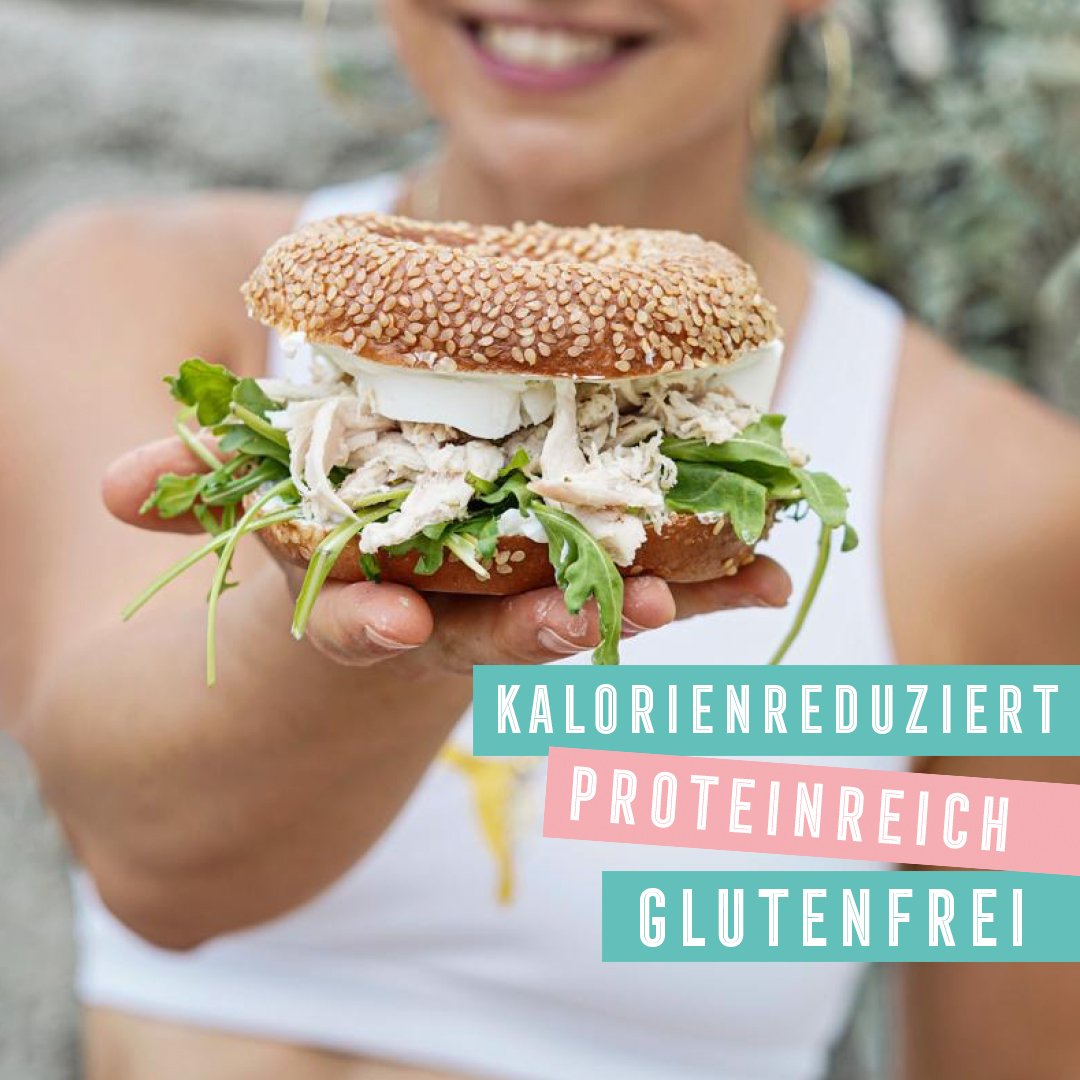window.flitsObjects && void 0!==window.flitsObjects||(window.flitsObjects={});
window.flitsObjects.global = {
partialCustomerHash: '378de4b47ce1d6b841f992f0ff2e628e40b55665ceee67b6bde281af083e0f65',
customerHash: '378de4b47ce1d6b841f992f0ff2e628e40b55665ceee67b6bde281af083e0f65',
shop_name: 'BenFit - High Protein und kalorienreduzierte Lebensmittel',
token: '65316d65cfc3ab4414f5f596e2907c38',
base_url: '/' + 'apps' + '/' + 'flits' + '/' + 'api' + '/' + '1' + '/' + '24344',
proxy_name: 'flits',
app_id: 1,
shop_id: 24344,
shop_token: '65316d65cfc3ab4414f5f596e2907c38',
chandle: 'flits_products_handle',
recent_handle: "flits_recently_products",
cemail: "flits_customer_email",
customJsURL:"https://cdn.shopify.com/extensions/019a57c9-a44c-7388-981d-4f829453cf99/flits-shopify-theme-app-extension-77/assets/flits_custom.js",
shop_currency: 'EUR',
shopCountryName: 'Germany',
defualtCountry: 'US',
money_format: '{{amount_with_comma_separator}}€',
money_format_replace: { moneyReplaceRegex:/((\,00)|(\.00))$/g, replaceTo: ''},
Metafields: {"APP_ID":"1","APP_NAMESPACE":"Flits","APP_PROXY":"flits","APP_SETTINGS_UPDATED":"1746531864","CREDIT_DISPLAY_ON":"cart","ENABLED_FEATURES_FOR_ONLINE_STORE":{"status":true,"cdnURL":"https:\/\/cdn.getflits.com","features":{"settings.social_login.google":1,"settings.social_login":1,"settings.app.reorder":1,"settings.credit.integration.klaviyo":1,"settings.app.order_contact_us":1,"settings.social_login.amazon":1,"settings.app.recently_viewed_products":1,"settings.social_login.twitter":1,"settings.invoice":1,"settings.credit.referrer_friend":true,"settings.social_login.facebook":1}},"FLITS_EXTENSION_ONSITE_CONTENT_ACCOUNT_PAGE_NAVIGATION":[{"path":"profile","remoteApp":"storeFrontMyProfile","label":["flits.navigation.profile","My Profile"],"type":"navPage","enabled":true,"duoSvg":"default","iconDisplayIn":[2],"defaultNavigation":true},{"path":"address","remoteApp":"storeFrontDeliveryAddress","label":["flits.navigation.delivery_address","Delivery Address"],"type":"navPageWithBadge","enabled":true,"duoSvg":"default","iconDisplayIn":[2]},{"path":"order","remoteApp":"storeFrontOrder","label":["flits.navigation.my_orders","My Orders"],"type":"navPageWithBadge","enabled":true,"duoSvg":"default","iconDisplayIn":[2]},{"path":"topOrder","remoteApp":"storeFrontTopOrderedProducts","label":["flits.navigation.top_ordered_products","Top Ordered Products"],"type":"navPage","enabled":["IS_ADVANCE_DASHBOARD_PAID","IS_ADVANCE_DASHBOARD_ENABLE"],"duoSvg":"default","iconDisplayIn":[2]},{"path":"wishlist","remoteApp":"storeFrontWishListPage","label":["flits.navigation.wishlist","My Wishlist"],"type":"navPageWithBadge","enabled":["IS_WISHLIST_ENABLE","IS_WISHLIST_PAID"],"duoSvg":"default","iconDisplayIn":[2]},{"path":"recentlyView","remoteApp":"storeFrontRecentlyViewedProducts","label":["flits.navigation.recently_viewed_products","Recently Viewed"],"type":"navPage","enabled":["is_recently_view_enable"],"duoSvg":"default","iconDisplayIn":[2]},{"path":"refundCredit","remoteApp":"storeFrontRefundCredit","label":["flits.navigation.store_credit","Store Credit"],"type":"navPageWithBadge","enabled":["IS_REFUND_CREDIT_ENABLE"],"duoSvg":"default","iconDisplayIn":[2]},{"path":"storeCredit","remoteApp":"storeFrontCredit","label":["flits.navigation.reward_credit","Reward Credit"],"type":"navPageWithBadge","enabled":["IS_STORE_CREDIT_PAID","is_store_credit_enable"],"duoSvg":"default","iconDisplayIn":[2]},{"path":"howToManageCredit","remoteApp":"storeFrontHowToManageCredit","label":["flits.navigation.how_to_manage_credit","How To Manage Credits"],"type":"navPage","enabled":["IS_HOW_TO_EARN_CREDIT_DISPLAY","is_store_credit_enable","IS_STORE_CREDIT_PAID"]},{"path":"howToEarn","remoteApp":"storeFrontHowToManageCredit","label":["flits.navigation.how_to_earn_credit","How To Earn"],"type":"navPage","enabled":["IS_HOW_TO_EARN_CREDIT_DISPLAY","is_store_credit_enable","IS_STORE_CREDIT_PAID"],"duoSvg":"default","iconDisplayIn":[2]},{"path":"howToSpent","remoteApp":"storeFrontHowToManageCredit","label":["flits.navigation.how_to_spend_credit","How To Spend"],"type":"navPage","enabled":["IS_HOW_TO_EARN_CREDIT_DISPLAY","is_store_credit_enable","IS_STORE_CREDIT_PAID"],"duoSvg":"default","iconDisplayIn":[2]},{"path":"fromAdmin","remoteApp":"storeFrontHowToManageCredit","label":["flits.navigation.from_admin","From Store Owner"],"type":"navPage","enabled":["IS_HOW_TO_EARN_CREDIT_DISPLAY","is_store_credit_enable","IS_STORE_CREDIT_PAID"],"duoSvg":"default","iconDisplayIn":[2]},{"path":"referFriend","remoteApp":"storeFrontReferFriend","label":["flits.navigation.refer_friend","Refer Friend"],"type":"navPage","enabled":["IS_STORE_CREDIT_PAID","is_store_credit_enable","IS_REFER_PROGRAM_ON"],"duoSvg":"default","iconDisplayIn":[2]},{"path":"\/tools\/recurring\/login","remoteApp":null,"label":["flits.navigation.mein_abo","MEIN ABO"],"type":"customLink","enabled":true,"duoSvg":"default","iconDisplayIn":[2]},{"path":"changePassword","remoteApp":"storeFrontChangePassword","label":["flits.navigation.change_password","Change Password"],"type":"navPage","enabled":true,"duoSvg":"default","iconDisplayIn":[2]},{"path":"\/account\/logout","remoteApp":null,"label":["flits.navigation.log_out","Log Out"],"type":"customLink","target":"_self","enabled":true,"duoSvg":"default","iconDisplayIn":[2]}],"GET_RULES_FOR_GUEST_CUSTOMERS":{"rules":{"all_rules_data":[{"rule_id":1,"is_fixed":1,"credits":100,"column_value":"1","module_on":"register","tab_to_append":"flits_earning_rules","relation":"==","avails":[],"is_default_rule":true,"is_earned":false},{"rule_id":16,"is_fixed":0,"credits":100,"column_value":"1","module_on":"order_number","tab_to_append":"flits_earning_rules","relation":"==","avails":[],"is_default_rule":true,"is_earned":false},{"rule_id":4,"is_fixed":0,"credits":200,"column_value":"2","module_on":"order_number","tab_to_append":"flits_earning_rules","relation":"\u003e=","avails":[],"is_default_rule":true,"is_earned":false},{"rule_id":19,"is_fixed":0,"credits":1000,"column_value":"1:35","module_on":"cart","tab_to_append":"flits_spent_rules","relation":"between","avails":[],"is_default_rule":true,"is_earned":false},{"rule_id":20,"is_fixed":0,"credits":5000,"column_value":"36:50","module_on":"cart","tab_to_append":"flits_spent_rules","relation":"between","avails":[],"is_default_rule":true,"is_earned":false},{"rule_id":5,"is_fixed":0,"credits":10000,"column_value":"51:-1","module_on":"cart","tab_to_append":"flits_spent_rules","relation":"between","avails":[],"is_default_rule":true,"is_earned":false},{"rule_id":7,"is_fixed":1,"credits":500,"column_value":"-1","module_on":"birthdate","tab_to_append":"flits_earning_rules","relation":"==","avails":[],"is_default_rule":true,"is_earned":false},{"rule_id":11,"is_fixed":1,"credits":500,"column_value":"-1","module_on":"referrer_friend","tab_to_append":"flits_earning_rules","relation":"==","avails":[],"is_default_rule":true,"is_earned":false}]}},"INVOICE_SETTINGS":{"isEnable":true,"displayOnCancelledOrder":false,"displayOnPlacedOrder":1},"IS_ADVANCE_DASHBOARD_ENABLE":0,"IS_ADVANCE_DASHBOARD_PAID":0,"IS_AMAZON_ENABLE":1,"is_cart_code_automatic":1,"IS_FACEBOOK_ENABLE":1,"IS_GOOGLE_ENABLE":1,"IS_HOW_TO_EARN_CREDIT_DISPLAY":0,"IS_ORDER_CONTACT_US_ENABLE":1,"IS_ORDER_TRACKING_PAID":1,"is_recently_view_enable":1,"IS_REFER_PROGRAM_ON":1,"IS_REORDER_ENABLE":1,"IS_SOCIAL_LOGIN_ENABLE":1,"IS_SOCIAL_LOGIN_PAID":1,"is_store_credit_enable":0,"IS_STORE_CREDIT_PAID":1,"IS_TRACK_TURTLE_ENABLE":0,"IS_TWITTER_ENABLE":1,"IS_WISHLIST_ENABLE":0,"IS_WISHLIST_PAID":0,"MICRO_FRONTEND_STOREFRONT_CONTAINER_URL":{"148189577484":"https:\/\/cdn.shopify.com\/s\/files\/1\/0666\/1200\/3110\/files\/main.storeFrontContainer_24344_148189577484.js?v=1726155861"},"MULTILANGUAGE_CONTENT_de_148189577484":{"flits":{"icons":{"close_icon":{"type":"url","code":"","url":"https:\/\/cdn.getflits.com\/icons\/default\/close-icon.svg"},"continue_icon":{"type":"url","code":"","url":"https:\/\/cdn.getflits.com\/icons\/default\/continue-icon.svg"},"edit_icon":{"type":"url","code":"","url":"https:\/\/cdn.getflits.com\/icons\/default\/edit-icon.svg"},"email_icon":{"type":"code","code":"\u003csvg xmlns='http:\/\/www.w3.org\/2000\/svg' width='16' height='14' viewBox='0 0 16 14' fill='none'\u003e \u003cpath d='M2.50016 1.1665H13.8335C14.6127 1.1665 15.2502 1.804 15.2502 2.58317V11.0832C15.2502 11.8623 14.6127 12.4998 13.8335 12.4998H2.50016C1.721 12.4998 1.0835 11.8623 1.0835 11.0832V2.58317C1.0835 1.804 1.721 1.1665 2.50016 1.1665Z' stroke='#4A4A4A' stroke-width='1.25' stroke-linecap='round' stroke-linejoin='round'\u003e\u003c\/path\u003e \u003cpath d='M15.2502 2.58301L8.16683 7.54134L1.0835 2.58301' stroke='#4A4A4A' stroke-width='1.25' stroke-linecap='round' stroke-linejoin='round'\u003e\u003c\/path\u003e \u003c\/svg\u003e","url":"https:\/\/cdn.getflits.com\/icons\/default\/email-icon.svg"},"phone_icon":{"type":"url","code":"","url":"https:\/\/cdn.getflits.com\/icons\/default\/phone-icon.svg"}},"general":{"greeting":"Hallo","morning":"Guten Morgen","afternoon":"Guten Tag","evening":"Guten Abend","cant_add_more_quantity":"Sie haben die Höchstgrenze erreicht. ","cart_updated":"Einige Artikel sind nicht mehr verfügbar. ","getting_customer_details":"Kundendaten abrufen\/synchronisieren","something_went_wrong":"Etwas ist schief gelaufen. "},"navigation":{"profile":"Mein Profil","delivery_address":"Lieferadresse","my_orders":"Meine Bestellungen","appstle_subscription":"Mein Abonnement","top_ordered_products":"Am häufigsten bestellte Produkte","wishlist":"Meine Wunschliste","recently_viewed_products":"Zuletzt angesehen","store_credit":"Meine Credits","how_to_manage_credit":"So verwalten Sie Credits","how_to_earn_credit":"So verdienen Sie","how_to_spend_credit":"Wie man Geld ausgibt","from_admin":"Vom Ladenbesitzer","refer_friend":"Empfehlen Sie einen Freund","change_password":"Kennwort ändern","log_out":"Abmelden"},"profile_page":{"first_name":"Vorname","last_name":"Nachname","email":"E-Mail","contact_number":"Kontaktnummer","birthdate":"Geburtsdatum","gender":"Geschlecht","male":"Männlich","female":"Weiblich","other":"Andere","edit_button":"Bearbeiten","cancel_button":"Stornieren","save_button":"Speichern","invalid_email":"E-Mail ist ungültig","invalid_email_domain":"Die E-Mail enthält einen ungültigen Domänennamen","email_already_taken":"Diese E-Mail wird bereits verwendet. ","invalid_contact_number":"Die Kontaktnummer ist ungültig","contact_number_already_taken":"Diese Kontaktnummer wird bereits verwendet. ","save_details":"Profildetails werden gespeichert...","saved_successfully":"Profil erfolgreich aktualisiert"},"address_page":{"add_new_address":"Neue Adresse hinzufügen","first_name":"Vorname","last_name":"Nachname","address1":"Adresszeile 1","address2":"Adresszeile 2","company":"Unternehmen","zip":"Postleitzahl","contact_number":"Kontaktnummer","city":"Stadt","country":"Land","province":"Provinz","mark_as_default_checkbox":"Als Standardadresse markieren","cancel_button":"Stornieren","save_button":"Speichern","first_name_is_long":"Der Vorname ist zu lang (maximal 255 Zeichen)","last_name_is_long":"Der Nachname ist zu lang (maximal 255 Zeichen)","address1_is_long":"Adresszeile 1 ist zu lang (maximal 255 Zeichen)","address2_is_long":"Adresszeile 2 ist zu lang (maximal 255 Zeichen)","company_name_is_long":"Der Firmenname ist zu lang (maximal 255 Zeichen)","city_is_long":"Die Stadt ist zu lang (maximal 255 Zeichen)","zip_is_long":"Zip ist zu lang (maximal 255 Zeichen)","invalid_contact_number":"Die Kontaktnummer ist ungültig","address_already_taken":"Diese Adresse existiert bereits.","country_invalid":"Das Land ist ungültig","adding_new_address":"Neue Adresse hinzufügen...","address_added_successfully":"Lieferadresse erfolgreich hinzugefügt","default_address_label":"Standard","mark_as_default_button":"Als Standard markieren","edit_button":"Bearbeiten","edit_address":"Adresse bearbeiten","updating_address":"Adresse wird aktualisiert...","address_updated_successfully":"Lieferadresse erfolgreich aktualisiert","delete_button":"Löschen","delete_confirmation_message":"Sind Sie sicher, dass Sie diese Adresse löschen möchten?","yes":"Ja","no":"NEIN","deleting_address":"Adresse wird gelöscht...","address_deleted_successfully":"Adresse erfolgreich gelöscht"},"order_page":{"blank_screen_line_1_html":"Sie haben noch keine Bestellungen aufgegeben.\u003cbr\u003eWir können es kaum erwarten, Sie als Kunden zu haben.","blank_screen_line_2_html":"Werfen Sie hier einen Blick auf unsere Produkte","order_date":"Datum","order_date_format":"%B %d %Y","order_number":"Befehl","total_items":"Gesamtzahl der Artikel","payment_status":"Zahlung","show_order_details":"Bestellung anzeigen","hide_order_details":"Bestellung ausblenden","reorder":"Nachbestellen","product_unavailable":"Nicht verfügbar","sold_out":"Ausverkauft","some_products_unavailable":"Einige der Produkte sind nicht verfügbar","one_product_unavailable":"Eines der Produkte ist nicht verfügbar","some_products_sold_out":"Einige Produkte sind ausverkauft","one_product_sold_out":"Eines der Produkte ist ausverkauft.","cost_breakup":"Kostenaufteilung","subtotal":"Zwischensumme","discount_code":"Rabatt","shipping_and_handling":"Versandkosten","grand_total":"Gesamtsumme","address":"Adresse","shipping_address":"Lieferadresse","billing_address":"Rechnungsadresse","cancel_at":"Abgesagt um","fulfillment_status":"Erfüllungsstatus","payment_type":"Zahlungsart"},"order_contact_us":{"contact_us_button":"Kontaktieren Sie uns","form_title":"Kontaktieren Sie uns","header_text":"Ihre Zufriedenheit steht bei uns an erster Stelle","customer_name_label":"Kundenname","first_name_label":"Vorname","first_name_placeholder":"James","last_name_label":"Nachname","last_name_placeholder":"Grau","email_label":"E-Mail","email_placeholder":"abc@xyz.com","email_required_warning":"E-Mail ist erforderlich","invalid_email_warning":"Bitte geben Sie eine gültige E-Mail-Adresse ein","contact_number_label":"Kontaktnummer","contact_number_placeholder":"1234567890","invalid_contact_number_warning":"Bitte geben Sie eine gültige Kontaktnummer ein","reason_label":"Grund zur Kontaktaufnahme","select_any_reason":"Wählen Sie einen Grund aus","order_cancel_related_reason":"Bestellung stornieren","order_and_shipping_related_reason":"Bestellung\/Versand","return_and_exchange_related_reason":"Rückgabe\/Umtausch","product_related_reason":"Produkt","price_related_reason":"Preis","other_reason":"Andere","reason_required_warning":"Bitte wählen Sie einen Grund aus","message_label":"Nachricht","message_placeholder":"Hallo Support-Team, wann kann ich mit meiner Bestellung rechnen?","message_required_warning":"Nachricht ist erforderlich","attachment_link_label":"Anhangslink","attachment_link_placeholder":"Sie können Dateien auf Ihr Laufwerk hochladen und den Link hier einfügen.","invalid_attachment_link_warning":"Bitte geben Sie einen gültigen Anhangslink ein","order_number_label":"Bestellnummer","order_name_label":"Bestellname","order_date_label":"Bestelldatum","order_total_price_label":"Gesamtpreis bestellen","order_fulfillment_status_label":"Auftragserfüllungsstatus","order_payment_status_label":"Zahlungsstatus der Bestellung","order_link_label":"Bestellung in Shopify anzeigen","customer_link_label":"Kunden in Shopify anzeigen","submit_button":"Einreichen","success_button":"OK","success_message_line_1":"Ihre Anfrage wurde übermittelt.","success_message_line_2":"Sie erhalten eine Antwort an die E-Mail-Adresse, die Sie im Anfrageformular angegeben haben.","success_message_line_3":"Vielen Dank, dass Sie uns kontaktiert haben.","already_contacted_message":"Sie haben uns zuletzt am kontaktiert {{ date_time }}"},"top_ordered_products_page":{"blank_screen_line_1_html":"Es sind keine am häufigsten bestellten Produkte zum Anzeigen vorhanden.\u003cbr\u003eWir sind uns ziemlich sicher, dass es ein paar Produkte gibt\u003cbr\u003eaus unserer fantastischen Kollektion\u003cbr\u003ewird es zu Ihren Top-Produkten schaffen.","search_placeholder":"Produkt hier suchen","search_product_not_found":"Keine Produkte gefunden","filter":"Filter","sort_by":"Sortieren nach","none":"Keiner","sort_by_price_low_to_high":"Nach Preis sortieren (Niedrig bis Hoch)","sort_by_price_high_to_low":"Nach Preis sortieren (hoch bis niedrig)","number_of_order_low_to_high":"Anzahl der Bestellungen (von niedrig nach hoch)","number_of_order_high_to_low":"Anzahl der Bestellungen (von hoch nach niedrig)","last_30_days":"Letzte 30 Tage","last_60_days":"Letzte 60 Tage","number_of_order":"Bisher bestellte Gesamtmenge"},"wishlisted_product_page":{"blank_screen_line_1_html":"Ihr Wunsch ist unser Befehl, aber\u003cbr\u003eSie haben keine Produkte auf die Wunschliste gesetzt.","blank_screen_line_2_html":"Sie können Produkte auf die Wunschliste setzen\u003cbr\u003eund sie später kaufen","add_to_wishlist_button":"Zur Wunschliste hinzufügen","remove_from_wishlist_button":"Zur Wunschliste hinzugefügt","product_added_to_wishlist":"Das Produkt wurde Ihrer Wunschliste hinzugefügt","product_remove_from_wishlist":"Das Produkt wurde von Ihrer Wunschliste entfernt","what_is_your_email":"Wie lautet Ihre E-Mail?","email_placeholder":"E-Mail-Adresse","create_account_through":"Bitte erstellen Sie ein Konto\/melden Sie sich über an {{ customer_email }} E-Mail","view_your_wishlist_message":"Sie können Ihre Wunschliste anzeigen, indem Sie ein Konto erstellen oder sich bei einem bestehenden Konto anmelden.","login":"Login","register":"Registrieren"},"recently_viewed_product_page":{"blank_screen_line_1_html":"Sieht so aus, als hätten Sie nicht ausgecheckt\u003cbr\u003eeines unserer Produkte in letzter Zeit.\u003cbr\u003eWir haben eine große Auswahl an Qualitätsprodukten.","blank_screen_line_2_html":"Warum also warten? "},"credit_page":{"blank_screen_line_1_html":"Sie verpassen es, davon zu profitieren\u003cbr\u003eunser Prämienprogramm.","blank_screen_line_2_html":"Warum also warten? ","header_line_html":"Sparen Sie Geld \u003cstrong\u003eDurch Belohnungen\u003c\/strong\u003e","chart1_header":"Kredit-Infosphäre","earned_credit":"Gutschrift erhalten","how_to_earn":"Wie verdiene ich?","spent_credit":"Guthaben ausgegeben","how_to_spend":"Wie kann ich Geld ausgeben?","current_credit":"Aktueller Kredit","credit_activity":"Letzte Transaktionen","time":"Datum","reason_for_credit":"Kreditgrund","credit":"CR\/DR","balance":"Gleichgewicht","registration_credit":"Registrierungsgutschrift","subscribe_credit":"Guthaben abonnieren","first_order_credit":"Gutschrift für erste Bestellung","spent_in_order":"Verbracht in {{ order_number }} Befehl","spent_in_order_through_pos":"Verbracht in {{ order_number }} Bestellung am POS","loyal_customer":"Treuer Kunde","repeat_customer":"Wiederholter Kunde","fault_in_product":"Fehler im Produkt","canceled_order_first_time_by_customer":"Bestellung wurde erstmals vom Kunden storniert","delay_in_delivery_time":"Verzögerung der Lieferzeit"},"how_to_earn_credit_page":{"header_line_html":"Verdienen Sie mehr \u003cstrong\u003eGeben Sie mehr aus\u003c\/strong\u003e","chart1_header":"Ihr verdientes Guthaben","no_rule_found":"Der Shop hat noch keine Regeln eingerichtet","register_credit_rule_title":"Guthaben registrieren","register_credit_rule_description":"Registrieren und erhalten {{ credit }} Kredit.","subscribe_credit_rule_title":"Abonnentenguthaben","subscribe_credit_rule_description":"Abonnieren und erhalten {{ credit }} Kredit.","subscribed_successfully":"Hurra! ","specific_order_credit_rule_title":"Gutschrift auf bestimmte Bestellung","specific_order_credit_rule_description":"Verdienen {{ credit }} Gutschrift auf Ihre Bestellnummer {{ order_count }}","specific_order_and_next_orders_credit_rule_title":"Gutschrift auf Bestellnummer {{ order_count }} und nächste Bestellungen","specific_order_and_next_orders_credit_rule_description":"Sie können verdienen {{ credit }} Gutschrift auf Bestellnummer {{ order_count }} und nächste Bestellungen {{ order_count+1 }}, {{ order_count+2 }}..... {{ order_count+n }}","birthdate_credit_rule_title":"Geburtstagsguthaben*","add_birthdate":"Fügen Sie Ihr Geburtsdatum hinzu","birthdate_credit_rule_description_1":"Teilen Sie uns Ihr Geburtsdatum mit, um es zu erhalten {{ credit }} Gutschrift an Ihrem Geburtstag.","birthdate_credit_rule_description_2":"{{ days }} Tag\/e übrig für eine Geburtstagsbelohnung von {{ credit }} Kredit.","birthdate_credit_rule_description_3":"*Sie können dieses Guthaben nur einmal im Jahr in Anspruch nehmen.","monthly_credit_rule_title":"Monatliches Guthaben","monthly_credit_rule_description":"Du wirst bekommen {{ credit }} Kredit auf {{ date }} eines jeden Monats.","special_day_credit_rule_title":"Bonus-Tagesguthaben","special_day_credit_rule_description":"Holen Sie sich ein besonderes Tagesguthaben {{ date }}","product_review_credit_rule_title":"Gutschrift für die Produktbewertung","product_review_credit_rule_description":"Schreiben Sie eine Produktbewertung und erhalten Sie {{ credit }} Kredit.","product_tag_credit_rule_title":"Gutschrift für eine bestimmte Produktkollektion","product_tag_credit_rule_description":"Produkt\/e mit (beliebigem Tag) kaufen {{ tag }} und bekommen {{ credit }} Kredit.","wishlisted_product_credit_rule_title":"Gutschrift für das gewünschte Produkt","wishlisted_product_credit_rule_description":"Sie können verdienen {{ credit }} Gutschrift, wenn Sie Produkte zur Wunschliste hinzufügen.","unlock_fixed_credit":"Entsperren {{ credit }}","unlock_some_percentage_credit":"Entsperren {{ credit }} Cashback","rule_not_applicable":"*Nicht zutreffend","why_rule_not_applicable_description":"Die Regel wurde möglicherweise zu einem späteren Zeitpunkt erstellt.","total_earned_credit_by_rule":"Gesamtguthaben bis heute: {{ credit }}","subscribing_email":"Ihre Anfrage, ein E-Mail-Abonnement vom Shop zu erhalten, wird angenommen."},"how_to_spend_credit_page":{"header_line_html":"Geben Sie mehr aus \u003cstrong\u003eSparen Sie mehr\u003c\/strong\u003e","chart1_header":"Ihre Gesamtersparnis","chart2_header":"Ihr aktuelles Guthaben","still_you_have_remaining_credit":"Du hast {{ credit }} verbleibendes Guthaben","no_rule_found":"Der Shop hat noch keine Regeln eingerichtet","select_cart_value":"Klicken Sie auf die Kreise, um den Guthabenbetrag zu überprüfen, den Sie basierend auf dem Warenkorbwert ausgeben können.","spend_credit_on_cart_rule_title":"Für den Warenkorb ausgeben","spend_credit_on_cart_rule_description_1":"Ihr Warenkorbwert liegt zwischen {{ min_cart_value }}-{{ max_cart_value }}. {{ credit }} Kredit.","spend_credit_on_cart_rule_description_2":"Ihr Warenkorbwert liegt zwischen {{ min_cart_value }}-{{ max_cart_value }}. {{ credit }} des Warenkorbwertes als Guthaben.","spend_credit_on_cart_rule_description_3":"Ihr Warenkorbwert beträgt {{ min_cart_value }} (oder mehr). {{ credit }} Kredit.","spend_credit_on_cart_rule_description_4":"Ihr Warenkorbwert beträgt {{ min_cart_value }} (oder mehr). {{ credit }} des Warenkorbwertes als Guthaben.","spend_credit_on_shipping_rule_title":"Kostenloser Versand","spend_credit_on_shipping_rule_description":"Sie können Ihr Guthaben für Versandkosten verwenden.","how_to_spend_credit_header":"Wie kann ich Guthaben ausgeben?","how_to_spend_credit_step_1":"Produkt in den Warenkorb legen","how_to_spend_credit_step_2":"Wählen Sie das verfügbare Guthaben aus, das Sie für Ihre Bestellung ausgeben möchten","how_to_spend_credit_step_3":"Gehen Sie zur Kasse"},"refer_friend_page":{"popup_greetings":"Willkommen Neuling","popup_message":"Sie wurden von empfohlen {{ inviter_name }}. ","refer_program_how_it_work_title":"Wie es funktioniert","refer_program_how_it_work_step_1":"Teilen Sie Ihren Empfehlungslink","refer_program_how_it_work_step_2":"Wenn sich Ihr Freund anmeldet","refer_program_how_it_work_step_3":"Du wirst belohnt","chart1_header":"Ihr verdientes Guthaben","unlock_referral_rewards":"Schalten Sie Ihre Empfehlungsprämien frei","total_referral":"Gesamtzahl der Empfehlungen","copy":"Kopie","referral_link_copied":"Link kopiert","share_referral_link_title":"Teilen Sie den Empfehlungslink über","facebook_share":"Aktie","whatsapp_share":"Aktie","share":"Aktie","referral_program_invitation_message":"Sie können eine Gutschrift für die Erstellung eines Kontos bei erhalten {{ shop_name }}. {{ link }}","blank_screen_line_1_html":"Sie haben bisher keine Empfehlungen.\u003cbr\u003eSie können Prämien verdienen, indem Sie Ihren Freunden unseren Shop weiterempfehlen.\u003cbr\u003eKopieren Sie den obigen Link und teilen Sie ihn mit Ihren Freunden oder","blank_screen_line_2_html":"Teilen Sie den Link direkt über WhatsApp und Facebook.","referrer_credit_rule_title":"Empfehlungsprogramm","referrer_credit_rule_description":"Laden Sie Ihre Freunde ein und erhalten Sie {{ credit }} Gutschrift, wenn sie sich anmelden.","referee_credit_rule_title":"Empfehlungsprogramm","referee_credit_rule_description":"Wenn Ihre Freunde die Einladung annehmen, erhalten sie sie {{ credit }} Kredit.","credit_on_number_of_referrals_rule_title":"Gutschrift auf die Anzahl der Empfehlungen","credit_on_number_of_referrals_rule_description":"Wenn du erreichst {{ referral_count }} Empfehlungen, die Sie erhalten {{ credit }} Kredit.","referrals_specific_order_credit_rule_title":"Gutschrift auf konkrete Bestellung durch den Schiedsrichter","referrals_specific_order_credit_rule_description":"Sie können verdienen {{ credit }} Gutschrift auf die Bestellnummer Ihres Schiedsrichters {{ order_count }}.","referrals_specific_order_and_next_orders_credit_rule_title":"Gutschrift auf die Bestellnummer des Schiedsrichters {{ order_count }} und nächste Bestellungen","referrals_specific_order_and_next_orders_credit_rule_description":"Sie können verdienen {{ credit }} Gutschrift auf die Bestellnummer des Schiedsrichters {{ order_count }} und nächste Bestellungen {{ order_count+1 }}, {{ order_count+2 }}... {{ order_count+n }}","credit_on_referrals_total_spent_amount_rule_title":"Gutschrift nach dem Gesamtausgabenbetrag der Empfehlung","credit_on_referrals_total_spent_amount_rule_description":"Sie können verdienen {{ credit }} Gutschrift, wenn der Gesamtausgabenbetrag Ihrer Empfehlung beträgt {{ total_spent_amount }} oder mehr.","credit_activity":"Empfehlungsverlauf","earned_credit":"Gutschrift erhalten","referral_customer_name":"Verweist auf","referral_customer_email":"E-Mail der Empfehlung","credit":"Kredit","time":"Seither empfohlen","you_are_referred_by":"Empfohlen von","customer_deleted":"Kunde gelöscht"},"from_admin_page":{"header_line_html":"Vom Ladenbesitzer"},"update_password_page":{"header_line_html":"Aktualisieren Sie Ihr Passwort für","new_password":"Neues Passwort","new_password_placeholder":"Geben Sie ein neues Passwort ein","confirm_new_password":"Bestätigen Sie das neue Passwort","confirm_password_placeholder":"Bestätigen Sie das neue Passwort","update_password_button":"Passwort aktualisieren","password_empty_message":"Das Passwort ist leer","password_hint_message":"Das Passwort muss zwischen 6 und 40 Zeichen lang sein","password_not_match":"Passwörter stimmten nicht überein. ","updating_password":"Passwort wird aktualisiert...","password_updated_successfully":"Ihr Passwort für Ihr Konto {{ email }} wurde erfolgreich aktualisiert"},"buttons":{"back":"Zurück","shop_now":"Produkte anzeigen","add_to_cart":"in den Warenkorb legen","sold_out":"Ausverkauft","previous":"Vorherige","next":"Nächste","product_unavailable_text":"Derzeit nicht verfügbar"},"months":{"january":"Januar","february":"Februar","march":"Marsch","april":"April","may":"Mai","june":"Juni","july":"Juli","august":"August","september":"September","october":"Oktober","november":"November","december":"Dezember"},"social_login_page":{"facebook":"Facebook","google":"Google","twitter":"Twitter","amazon":"Amazonas","loading_message":"Ich melde mich an"},"cart_page":{"adding_items_to_cart":"Artikel werden in den Warenkorb gelegt...","select_credit_option":"Wählen Sie die Option, um Guthaben zu verwenden","credit_cart_percentage":"Sie können verwenden {{ credit }} Kredit aus {{ total_credit }}.","free_shipping":"Sie können kostenlosen Versand erhalten","applying_credit_message":"Bitte warten Sie, bis die Gutschrift beantragt wird","credit_applied":"Store-Guthaben angewendet"},"invoice":{"invoice_title":"RECHNUNG","invoice_no":"Rechnung","payment_method":"Zahlungsmethode","order_no":"Befehl","issue_date":"Ausgabedatum","order_date":"Bestelldatum","billing_address_title":"Gesetzesentwurf für","no_billing_address":"Keine Rechnungsadresse angegeben","shipping_address_title":"Ausliefern","no_shipping_address":"Keine Lieferadresse angegeben","money_format":"{{ symbol }}{{ amount }}","item_title":"Artikel","item_quantity":"Menge","item_price":"Stückpreis","item_discount":"Rabatt","item_tax_rate":"Steuersatz","item_tax_type":"Steuerart","item_tax_amount":"Steuerbetrag","item_total":"Gesamt","subtotal":"Zwischensumme","shipping_discount":"Versandrabatt","shipping_cost":"Versandkosten","tax":"Steuer","grand_total":"Gesamtsumme","you_saved":"Du hast gespeichert","amount_in_words":"Betrag in Worten","for_store_name":"Für {{ store_name }}","authorised_signatory":"Zeichnungsberechtigter","greeting_line1":"Danke","greeting_line2":"Wir wünschen Ihnen viel Spaß beim Kauf.","email":"E-Mail","phone":"Tel.-Nr","fax":"Fax","page_no":"Seite {{ current_page }} von {{ total_page }}","zero":"Null","one":"Eins","two":"Zwei","three":"Drei","four":"Vier","five":"Fünf","six":"Sechs","seven":"Sieben","eight":"Acht","nine":"Neun","ten":"Zehn","eleven":"Elf","twelve":"Zwölf","thirteen":"Dreizehn","fourteen":"Vierzehn","fifteen":"Fünfzehn","sixteen":"Sechzehn","seventeen":"Siebzehn","eighteen":"Achtzehn","nineteen":"Neunzehn","twenty":"Zwanzig","thirty":"Dreißig","forty":"Vierzig","fifty":"Fünfzig","sixty":"Sechzig","seventy":"Siebzig","eighty":"Achtzig","ninety":"Neunzig","hundred":"Hundert","thousand":"Tausend","million":"Million","billion":"Milliarde","trillion":"Billion","zero_only":"Nur Null","only":"nur","and":"Und","invoice_is_generating":"Rechnung wird erstellt...","saving_invoice":"Rechnung speichern"},"order_status_page":{"total_earned_credit_on_order":"Glückwunsch! {{ credit }} Gutschrift für diesen Kauf.","earned_credit_on_order_number":"Du hast es verdient {{ credit }} Gutschrift für diese Bestellung.","earned_credit_on_product_tag":"Du hast es verdient {{ credit }} Kredit durch Kauf bei {{ tag }} Sammlung.","total_credit_balance":"Ihr Gesamtguthaben beträgt {{ credit }}.","shop_more_to_earn_credit_html":"Möchten Sie mehr Credits verdienen und viel Geld sparen? ","shop_more_to_spent_credit_html":"Haben Sie noch Credits übrig? "},"custom_fields":{"file_type_invalid_error_message":"Bitte überprüfen Sie den Dateityp und versuchen Sie es erneut","file_size_exceed_error_message":"Die Dateigröße überschreitet 1 MB. Bitte ändern Sie die Größe und laden Sie sie hoch"},"otp_login":{"global":{"errors":{"first_name_required":"Bitte geben Sie Ihren Vornamen ein, um fortzufahren","last_name_required":"Bitte geben Sie Ihren Nachnamen ein, um fortzufahren","email_invalid":"Bitte geben Sie eine gültige E-Mail-Adresse ein, um fortzufahren","email_required":"Bitte geben Sie eine gültige E-Mail-Adresse ein, um fortzufahren","phone_invalid":"Bitte geben Sie eine gültige Telefonnummer ein, um fortzufahren","phone_required":"Bitte geben Sie eine gültige Telefonnummer ein, um fortzufahren","something_wrong":"Etwas ist schief gelaufen! ","otp_verify_sucess":"OTP erfolgreich verifiziert","otp_sent_sucess":"OTP erfolgreich gesendet","invalid_otp":"Das von Ihnen eingegebene OTP stimmte nicht überein. ","email_already_exists":"E-Mail existiert bereits, bitte versuchen Sie es mit einer anderen E-Mail","phone_already_exists":"Die Telefonnummer ist bereits vorhanden. Bitte versuchen Sie es mit einer anderen Telefonnummer","email_already_exists_with_phone":"E-Mail mit Telefonnummer existiert bereits {{ phone }} ","phone_already_exists_with_email":"Telefonnummer existiert bereits mit E-Mail {{ email }} ","ip_block_error":"Es scheint, dass es mehrere Versuche für OTP gegeben hat. "},"label":{"first_name":"Vorname","last_name":"Nachname","email":"E-Mail","phone":"Telefonnummer"},"placeholder":{"first_name":"Vorname","last_name":"Nachname","email":"E-Mail","phone":"Telefonnummer"}},"login":{"page_title":"Melden Sie sich mit OTP an","page_sub_head_email":"Bitte geben Sie Ihre E-Mail-Adresse ein","page_sub_head_phone":"Bitte geben Sie Ihre 10-stellige Handynummer ein","otp_hint_phone":"Ein 6-stelliges OTP wird an Ihre Telefonnummer gesendet","otp_hint_email":"Ein 6-stelliges OTP wird an Ihre E-Mail-Adresse gesendet","change_login_btn_phone":"Telefon","change_login_btn_email":"E-Mail","continue":"OTP anfordern","or_login_using":"Melden Sie sich an mit"},"otp_verify":{"page_title":"Bitte geben Sie OTP zur Überprüfung ein","page_sub_head":"Bitte geben Sie den gesendeten Code ein","next_step_btn":"Bestätigen Sie, um fortzufahren","resend_otp_title":"Sie haben das OTP nicht erhalten? ","resend_otp_btn":"OTP erneut senden","resend_otp_sucess_msg":"OTP erfolgreich erneut senden"},"account_deatils":{"page_title":"Profildetails","page_sub_head":"Hallo! ","submit_btn":"Aktualisieren und anmelden","verify_email_error":"Wir müssen die oben eingegebene E-Mail-Adresse überprüfen. ","verify_phone_error":"Wir müssen die oben eingegebene Telefonnummer überprüfen. ","verify_phone_text":"Telefon bestätigen","verify_email_text":"E-Mail bestätigen","enter_otp_text":"Bitte verifizieren Sie Ihr Konto, indem Sie das OTP einreichen","otp_sent_to_text":"OTP gesendet an"}},"checkout":{"apply_btn_text":"Anwenden","credit_dropdown_label":"Wählen Sie die Option zur Nutzung des Guthabens","credit_dropdown_first_option":"Wählen Sie die Option zur Nutzung des Guthabens","credit_cart_percentage":"Sie können verwenden {{ credit }} Kredit aus {{ total_credit }}.","credit_dropdown_not_selected":"Bitte wählen Sie die Kreditoption aus","credit_checkbox_not_selected":"Bitte aktivieren Sie das Kontrollkästchen „Kredit“, um eine Gutschrift zu beantragen","something_went-wrong":"Etwas ist schief gelaufen! "}}},"MULTILANGUAGE_CONTENT_fr_148189577484":{"flits":{"icons":{"close_icon":{"type":"url","code":"","url":"https:\/\/cdn.getflits.com\/icons\/default\/close-icon.svg"},"continue_icon":{"type":"url","code":"","url":"https:\/\/cdn.getflits.com\/icons\/default\/continue-icon.svg"},"edit_icon":{"type":"url","code":"","url":"https:\/\/cdn.getflits.com\/icons\/default\/edit-icon.svg"},"email_icon":{"type":"code","code":"\u003csvg xmlns='http:\/\/www.w3.org\/2000\/svg' width='16' height='14' viewBox='0 0 16 14' fill='none'\u003e \u003cpath d='M2.50016 1.1665H13.8335C14.6127 1.1665 15.2502 1.804 15.2502 2.58317V11.0832C15.2502 11.8623 14.6127 12.4998 13.8335 12.4998H2.50016C1.721 12.4998 1.0835 11.8623 1.0835 11.0832V2.58317C1.0835 1.804 1.721 1.1665 2.50016 1.1665Z' stroke='#4A4A4A' stroke-width='1.25' stroke-linecap='round' stroke-linejoin='round'\u003e\u003c\/path\u003e \u003cpath d='M15.2502 2.58301L8.16683 7.54134L1.0835 2.58301' stroke='#4A4A4A' stroke-width='1.25' stroke-linecap='round' stroke-linejoin='round'\u003e\u003c\/path\u003e \u003c\/svg\u003e","url":"https:\/\/cdn.getflits.com\/icons\/default\/email-icon.svg"},"phone_icon":{"type":"url","code":"","url":"https:\/\/cdn.getflits.com\/icons\/default\/phone-icon.svg"}},"general":{"greeting":"Bonjour","morning":"Bonjour","afternoon":"Bon après-midi","evening":"Bonne soirée","cant_add_more_quantity":"Vous avez atteint la limite maximale. ","cart_updated":"Certains articles ne sont plus disponibles. ","getting_customer_details":"Obtenir\/synchroniser les détails du client","something_went_wrong":"Quelque chose s'est mal passé. "},"navigation":{"profile":"Mon profil","delivery_address":"Adresse de livraison","my_orders":"Mes commandes","appstle_subscription":"Mon abonnement","top_ordered_products":"Produits les plus commandés","wishlist":"Ma liste de souhaits","recently_viewed_products":"Récemment consulté","store_credit":"Mes crédits","how_to_manage_credit":"Comment gérer les crédits","how_to_earn_credit":"Comment gagner","how_to_spend_credit":"Comment dépenser","from_admin":"Du propriétaire du magasin","refer_friend":"Parrainer un ami","change_password":"Changer le mot de passe","log_out":"Se déconnecter"},"profile_page":{"first_name":"Prénom","last_name":"Nom de famille","email":"E-mail","contact_number":"Numéro de contact","birthdate":"Date de naissance","gender":"Genre","male":"Mâle","female":"Femelle","other":"Autre","edit_button":"Modifier","cancel_button":"Annuler","save_button":"Sauvegarder","invalid_email":"L'e-mail n'est pas valide","invalid_email_domain":"L'e-mail contient un nom de domaine invalide","email_already_taken":"Cet e-mail est déjà utilisé. ","invalid_contact_number":"Le numéro de contact n'est pas valide","contact_number_already_taken":"Ce numéro de contact est déjà utilisé. ","save_details":"Enregistrement des détails du profil...","saved_successfully":"Profil mis à jour avec succès"},"address_page":{"add_new_address":"Ajouter une nouvelle adresse","first_name":"Prénom","last_name":"Nom de famille","address1":"Adresse Ligne 1","address2":"Ligne d'adresse 2","company":"Entreprise","zip":"Code postal","contact_number":"Numéro de contact","city":"Ville","country":"Pays","province":"Province","mark_as_default_checkbox":"Marquer comme adresse par défaut","cancel_button":"Annuler","save_button":"Sauvegarder","first_name_is_long":"Le prénom est trop long (maximum 255 caractères)","last_name_is_long":"Le nom de famille est trop long (maximum 255 caractères)","address1_is_long":"La ligne d'adresse 1 est trop longue (le maximum est de 255 caractères)","address2_is_long":"La ligne d'adresse 2 est trop longue (le maximum est de 255 caractères)","company_name_is_long":"Le nom de l'entreprise est trop long (maximum 255 caractères)","city_is_long":"La ville est trop longue (255 caractères maximum)","zip_is_long":"Le zip est trop long (maximum 255 caractères)","invalid_contact_number":"Le numéro de contact n'est pas valide","address_already_taken":"Cette adresse existe déjà.","country_invalid":"Le pays n'est pas valide","adding_new_address":"Ajout d'une nouvelle adresse...","address_added_successfully":"Adresse de livraison ajoutée avec succès","default_address_label":"Défaut","mark_as_default_button":"Marquer par défaut","edit_button":"Modifier","edit_address":"Modifier l'adresse","updating_address":"Mise à jour de l'adresse...","address_updated_successfully":"Adresse de livraison mise à jour avec succès","delete_button":"Supprimer","delete_confirmation_message":"Êtes-vous sûr de vouloir supprimer cette adresse ?","yes":"Oui","no":"Non","deleting_address":"Suppression de l'adresse...","address_deleted_successfully":"Adresse supprimée avec succès"},"order_page":{"blank_screen_line_1_html":"Vous n'avez pas encore passé de commande.\u003cbr\u003eNous avons hâte de vous compter parmi nos clients.","blank_screen_line_2_html":"Jetez un oeil à nos produits ici","order_date":"Date","order_date_format":"%B %d %Y","order_number":"Commande","total_items":"Total des articles","payment_status":"Paiement","show_order_details":"Voir la commande","hide_order_details":"Masquer la commande","reorder":"Réorganiser","product_unavailable":"Indisponible","sold_out":"Épuisé","some_products_unavailable":"Certains produits ne sont pas disponibles","one_product_unavailable":"Un des produits est indisponible","some_products_sold_out":"Certains produits sont épuisés","one_product_sold_out":"L'un des produits est épuisé.","cost_breakup":"Répartition des coûts","subtotal":"Sous-total","discount_code":"Rabais","shipping_and_handling":"Frais d'expédition","grand_total":"Total","address":"Adresse","shipping_address":"adresse de livraison","billing_address":"adresse de facturation","cancel_at":"Annulé à","fulfillment_status":"Statut d'exécution","payment_type":"Type de paiement"},"order_contact_us":{"contact_us_button":"Contactez-nous","form_title":"Contactez-nous","header_text":"Votre satisfaction est notre priorité absolue","customer_name_label":"Nom du client","first_name_label":"Prénom","first_name_placeholder":"Jacques","last_name_label":"Nom de famille","last_name_placeholder":"Gris","email_label":"E-mail","email_placeholder":"abc@xyz.com","email_required_warning":"L'e-mail est requis","invalid_email_warning":"S'il vous plaît, mettez une adresse email valide","contact_number_label":"Numéro de contact","contact_number_placeholder":"1234567890","invalid_contact_number_warning":"Veuillez entrer un numéro de contact valide","reason_label":"Raison de contacter","select_any_reason":"Sélectionnez une raison","order_cancel_related_reason":"Annuler la commande","order_and_shipping_related_reason":"Commande\/Expédition","return_and_exchange_related_reason":"Retour\/Échange","product_related_reason":"Produit","price_related_reason":"Prix","other_reason":"Autre","reason_required_warning":"Veuillez sélectionner une raison","message_label":"Message","message_placeholder":"Bonjour l'équipe d'assistance, quand puis-je attendre ma commande ?","message_required_warning":"Le message est requis","attachment_link_label":"Lien de pièce jointe","attachment_link_placeholder":"Vous pouvez télécharger des fichiers sur votre lecteur et coller le lien ici.","invalid_attachment_link_warning":"Veuillez saisir un lien de pièce jointe valide","order_number_label":"Numéro de commande","order_name_label":"Nom de la commande","order_date_label":"Date de commande","order_total_price_label":"Prix total de la commande","order_fulfillment_status_label":"Statut d'exécution de la commande","order_payment_status_label":"Statut de paiement de la commande","order_link_label":"Afficher la commande dans Shopify","customer_link_label":"Afficher le client dans Shopify","submit_button":"Soumettre","success_button":"D'ACCORD","success_message_line_1":"Votre demande a été soumise.","success_message_line_2":"Vous recevrez une réponse à l'adresse e-mail que vous avez indiquée dans le formulaire de requête.","success_message_line_3":"Merci de nous avoir contactés.","already_contacted_message":"Vous nous avez contacté pour la dernière fois le {{ date_time }}"},"top_ordered_products_page":{"blank_screen_line_1_html":"Il n'y a pas de produits les mieux commandés à afficher.\u003cbr\u003eNous sommes presque sûrs que quelques produits\u003cbr\u003ede notre fantastique collection\u003cbr\u003efera partie de vos meilleurs produits.","search_placeholder":"Rechercher un produit ici","search_product_not_found":"Aucun produit trouvé","filter":"Filtre","sort_by":"Trier par","none":"Aucun","sort_by_price_low_to_high":"Trier par prix (du bas au haut)","sort_by_price_high_to_low":"Trier par prix (du haut au bas)","number_of_order_low_to_high":"Nombre de commandes (faible à élevé)","number_of_order_high_to_low":"Nombre de commandes (élevé à faible)","last_30_days":"30 derniers jours","last_60_days":"60 derniers jours","number_of_order":"Quantité totale commandée jusqu'à maintenant"},"wishlisted_product_page":{"blank_screen_line_1_html":"Votre souhait est notre commande mais\u003cbr\u003evous n'avez ajouté aucun produit à votre liste de souhaits.","blank_screen_line_2_html":"Vous pouvez souhaiter des produits\u003cbr\u003eet je les achèterai plus tard","add_to_wishlist_button":"Ajouter à la liste de souhaits","remove_from_wishlist_button":"Ajouté à la liste de souhaits","product_added_to_wishlist":"Le produit a été ajouté à votre liste de souhaits","product_remove_from_wishlist":"Produit supprimé de votre liste de souhaits","what_is_your_email":"Quel est votre e-mail ?","email_placeholder":"Adresse email","create_account_through":"Veuillez créer un compte\/vous connecter via {{ customer_email }} e-mail","view_your_wishlist_message":"Vous pouvez consulter votre liste de souhaits en créant un compte ou en vous connectant à un compte existant.","login":"Se connecter","register":"Registre"},"recently_viewed_product_page":{"blank_screen_line_1_html":"On dirait que vous n'avez pas vérifié\u003cbr\u003el'un de nos produits récemment.\u003cbr\u003eNous disposons d'une vaste collection de produits de qualité.","blank_screen_line_2_html":"Alors pourquoi attendre ? "},"credit_page":{"blank_screen_line_1_html":"Vous manquez de profiter de\u003cbr\u003enotre programme de récompense.","blank_screen_line_2_html":"Alors pourquoi attendre ? ","header_line_html":"Économisez de l'argent \u003cstrong\u003eGrâce aux récompenses\u003c\/strong\u003e","chart1_header":"Infosphère du crédit","earned_credit":"Crédit gagné","how_to_earn":"Comment gagner ?","spent_credit":"Crédit dépensé","how_to_spend":"Comment dépenser ?","current_credit":"Crédit actuel","credit_activity":"Transactions récentes","time":"Date","reason_for_credit":"Raison du crédit","credit":"CR\/DR","balance":"Équilibre","registration_credit":"Crédit d'inscription","subscribe_credit":"Abonnez-vous au crédit","first_order_credit":"Crédit de première commande","spent_in_order":"Dépensé dans {{ order_number }} commande","spent_in_order_through_pos":"Dépensé dans {{ order_number }} commander via le point de vente","loyal_customer":"Client fidèle","repeat_customer":"Client régulier","fault_in_product":"Défaut dans le produit","canceled_order_first_time_by_customer":"Commande annulée une première fois par le client","delay_in_delivery_time":"Retard dans le délai de livraison"},"how_to_earn_credit_page":{"header_line_html":"Gagnez plus \u003cstrong\u003eDépensez plus\u003c\/strong\u003e","chart1_header":"Votre crédit gagné","no_rule_found":"Le magasin n'a pas encore mis en place de règles","register_credit_rule_title":"Enregistrer un crédit","register_credit_rule_description":"Inscrivez-vous et obtenez {{ credit }} crédit.","subscribe_credit_rule_title":"Crédit d'abonné","subscribe_credit_rule_description":"Abonnez-vous et recevez {{ credit }} crédit.","subscribed_successfully":"Hourra! ","specific_order_credit_rule_title":"Crédit sur commande spécifique","specific_order_credit_rule_description":"Gagner {{ credit }} crédit sur votre numéro de commande {{ order_count }}","specific_order_and_next_orders_credit_rule_title":"Crédit sur numéro de commande {{ order_count }} et prochaines commandes","specific_order_and_next_orders_credit_rule_description":"Vous pouvez gagner {{ credit }} crédit sur le numéro de commande {{ order_count }} et prochaines commandes {{ order_count+1 }}, {{ order_count+2 }}..... {{ order_count+n }}","birthdate_credit_rule_title":"Crédit d'anniversaire*","add_birthdate":"Ajoutez votre date de naissance","birthdate_credit_rule_description_1":"Partagez votre date de naissance avec nous pour obtenir {{ credit }} crédit le jour de votre anniversaire.","birthdate_credit_rule_description_2":"{{ days }} jour(s) restant pour une récompense d'anniversaire de {{ credit }} crédit.","birthdate_credit_rule_description_3":"*Vous ne pouvez bénéficier de ce crédit qu'une fois par an.","monthly_credit_rule_title":"Crédit mensuel","monthly_credit_rule_description":"Vous obtiendrez {{ credit }} crédit sur {{ date }} de chaque mois.","special_day_credit_rule_title":"Crédit de jour bonus","special_day_credit_rule_description":"Obtenez un crédit pour une journée spéciale sur {{ date }}","product_review_credit_rule_title":"Crédit d'évaluation du produit","product_review_credit_rule_description":"Écrivez un avis sur un produit et obtenez {{ credit }} crédit.","product_tag_credit_rule_title":"Crédit pour une collection de produits spécifiques","product_tag_credit_rule_description":"Acheter des produits avec (n'importe quelle balise) {{ tag }} et obtenez {{ credit }} crédit.","wishlisted_product_credit_rule_title":"Crédit produit sur liste de souhaits","wishlisted_product_credit_rule_description":"Vous pouvez gagner {{ credit }} crédit lorsque vous ajoutez des produits à la liste de souhaits.","unlock_fixed_credit":"Ouvrir {{ credit }}","unlock_some_percentage_credit":"Ouvrir {{ credit }} remise en argent","rule_not_applicable":"*Ne s'applique pas","why_rule_not_applicable_description":"La règle a peut-être été mise en place à une date ultérieure.","total_earned_credit_by_rule":"Total des crédits gagnés jusqu'à ce jour : {{ credit }}","subscribing_email":"Votre demande de réception d'un abonnement mail de la boutique est en cours d'acceptation."},"how_to_spend_credit_page":{"header_line_html":"Dépensez plus \u003cstrong\u003eÉconomisez davantage\u003c\/strong\u003e","chart1_header":"Vos économies totales","chart2_header":"Votre crédit actuel","still_you_have_remaining_credit":"Tu as {{ credit }} crédit restant","no_rule_found":"Le magasin n'a pas encore mis en place de règles","select_cart_value":"Cliquez sur les cercles pour vérifier le montant du crédit que vous pouvez dépenser en fonction de la valeur du panier.","spend_credit_on_cart_rule_title":"Dépenser sur le panier","spend_credit_on_cart_rule_description_1":"La valeur de votre panier est comprise entre {{ min_cart_value }}-{{ max_cart_value }}. {{ credit }} crédit.","spend_credit_on_cart_rule_description_2":"La valeur de votre panier est comprise entre {{ min_cart_value }}-{{ max_cart_value }}. {{ credit }} de la valeur du panier sous forme de crédit.","spend_credit_on_cart_rule_description_3":"La valeur de votre panier est {{ min_cart_value }} (ou plus). {{ credit }} crédit.","spend_credit_on_cart_rule_description_4":"La valeur de votre panier est {{ min_cart_value }} (ou plus). {{ credit }} de la valeur du panier sous forme de crédit.","spend_credit_on_shipping_rule_title":"Livraison gratuite","spend_credit_on_shipping_rule_description":"Vous pouvez utiliser votre crédit sur les frais d'expédition.","how_to_spend_credit_header":"Comment dépenser du crédit ?","how_to_spend_credit_step_1":"Ajouter le produit au panier","how_to_spend_credit_step_2":"Choisissez le crédit disponible à dépenser sur votre commande","how_to_spend_credit_step_3":"Passer à la caisse"},"refer_friend_page":{"popup_greetings":"Bienvenue nouveau venu","popup_message":"Vous avez été référé par {{ inviter_name }}. ","refer_program_how_it_work_title":"Comment ça marche","refer_program_how_it_work_step_1":"Partagez votre lien de parrainage","refer_program_how_it_work_step_2":"Quand votre ami s'inscrit","refer_program_how_it_work_step_3":"Vous êtes récompensé","chart1_header":"Votre crédit gagné","unlock_referral_rewards":"Débloquez vos récompenses de parrainage","total_referral":"Total des références","copy":"Copie","referral_link_copied":"Lien copié","share_referral_link_title":"Partager le lien de parrainage via","facebook_share":"Partager","whatsapp_share":"Partager","share":"Partager","referral_program_invitation_message":"Vous pouvez gagner du crédit en créant un compte avec {{ shop_name }}. {{ link }}","blank_screen_line_1_html":"Vous n'avez aucune référence jusqu'à présent.\u003cbr\u003eVous pouvez gagner des récompenses en référant notre boutique à vos amis.\u003cbr\u003eCopiez le lien ci-dessus et partagez-le avec vos amis ou","blank_screen_line_2_html":"Partagez le lien directement via WhatsApp et Facebook.","referrer_credit_rule_title":"Programme de parrainage","referrer_credit_rule_description":"Invitez vos amis et obtenez {{ credit }} crédit lors de leur inscription.","referee_credit_rule_title":"Programme de parrainage","referee_credit_rule_description":"Lorsque vos amis accepteront l'invitation, ils recevront {{ credit }} crédit.","credit_on_number_of_referrals_rule_title":"Crédit sur le nombre de références","credit_on_number_of_referrals_rule_description":"Quand tu atteindras {{ referral_count }} les références que vous obtenez {{ credit }} crédit.","referrals_specific_order_credit_rule_title":"Crédit sur commande spécifique par arbitre","referrals_specific_order_credit_rule_description":"Vous pouvez gagner {{ credit }} crédit sur le numéro de commande de votre filleul {{ order_count }}.","referrals_specific_order_and_next_orders_credit_rule_title":"Crédit sur le numéro de commande de l'arbitre {{ order_count }} et prochaines commandes","referrals_specific_order_and_next_orders_credit_rule_description":"Vous pouvez gagner {{ credit }} crédit sur le numéro de commande de l'arbitre {{ order_count }} et prochaines commandes {{ order_count+1 }}, {{ order_count+2 }}... {{ order_count+n }}","credit_on_referrals_total_spent_amount_rule_title":"Crédit après le parrainage du montant total dépensé","credit_on_referrals_total_spent_amount_rule_description":"Vous pouvez gagner {{ credit }} crédit lorsque le montant total dépensé par votre filleul est {{ total_spent_amount }} ou plus.","credit_activity":"Historique des références","earned_credit":"Crédit gagné","referral_customer_name":"Référé à","referral_customer_email":"E-mail de référence","credit":"Crédit","time":"Référé depuis","you_are_referred_by":"Référé par","customer_deleted":"Client supprimé"},"from_admin_page":{"header_line_html":"Du propriétaire du magasin"},"update_password_page":{"header_line_html":"Mettez à jour votre mot de passe pour","new_password":"Nouveau mot de passe","new_password_placeholder":"Entrez un nouveau mot de passe","confirm_new_password":"Confirmer le nouveau mot de passe","confirm_password_placeholder":"Confirmer le nouveau mot de passe","update_password_button":"Mettre à jour le mot de passe","password_empty_message":"Le mot de passe est vide","password_hint_message":"Le mot de passe doit comporter entre 6 et 40 caractères","password_not_match":"Les mots de passe ne correspondent pas. ","updating_password":"Mise à jour du mot de passe...","password_updated_successfully":"Votre mot de passe pour le compte {{ email }} a été mis à jour avec succès"},"buttons":{"back":"Dos","shop_now":"Voir les produits","add_to_cart":"Ajouter au panier","sold_out":"Épuisé","previous":"Précédent","next":"Suivant","product_unavailable_text":"Actuellement indisponible"},"months":{"january":"Janvier","february":"Février","march":"Mars","april":"Avril","may":"Peut","june":"Juin","july":"Juillet","august":"Août","september":"Septembre","october":"Octobre","november":"Novembre","december":"Décembre"},"social_login_page":{"facebook":"Facebook","google":"Google","twitter":"Gazouillement","amazon":"Amazone","loading_message":"Vous connecter"},"cart_page":{"adding_items_to_cart":"Ajout d'articles au panier...","select_credit_option":"Sélectionnez l'option pour utiliser le crédit du magasin","credit_cart_percentage":"Vous pouvez utiliser {{ credit }} crédit sur {{ total_credit }}.","free_shipping":"Vous pouvez bénéficier de la livraison gratuite","applying_credit_message":"Demande de crédit, veuillez patienter","credit_applied":"Crédit en magasin appliqué"},"invoice":{"invoice_title":"FACTURE","invoice_no":"Facture","payment_method":"Mode de paiement","order_no":"Commande","issue_date":"Date d'émission","order_date":"Date de commande","billing_address_title":"Facturer à","no_billing_address":"Aucune adresse de facturation fournie","shipping_address_title":"Envoyez à","no_shipping_address":"Aucune adresse de livraison fournie","money_format":"{{ symbol }}{{ amount }}","item_title":"Article","item_quantity":"Quantité","item_price":"Prix unitaire","item_discount":"Rabais","item_tax_rate":"Taux d'imposition","item_tax_type":"Type de taxe","item_tax_amount":"Montant de la taxe","item_total":"Total","subtotal":"Sous-total","shipping_discount":"Remise sur les frais d'expédition","shipping_cost":"Frais d'expédition","tax":"Impôt","grand_total":"Total","you_saved":"Vous avez sauvé","amount_in_words":"Montant en mots","for_store_name":"Pour {{ store_name }}","authorised_signatory":"Signataire autorisé","greeting_line1":"Merci","greeting_line2":"Nous espérons que vous apprécierez votre achat.","email":"E-mail","phone":"Numéro de téléphone","fax":"Fax","page_no":"Page {{ current_page }} de {{ total_page }}","zero":"Zéro","one":"Un","two":"Deux","three":"Trois","four":"Quatre","five":"Cinq","six":"Six","seven":"Sept","eight":"Huit","nine":"Neuf","ten":"Dix","eleven":"Onze","twelve":"Douze","thirteen":"Treize","fourteen":"Quatorze","fifteen":"Quinze","sixteen":"Seize","seventeen":"Dix-sept","eighteen":"Dix-huit","nineteen":"Dix-neuf","twenty":"Vingt","thirty":"Trente","forty":"Quarante","fifty":"Cinquante","sixty":"Soixante","seventy":"Soixante-dix","eighty":"Quatre-vingts","ninety":"Quatre-vingt-dix","hundred":"Cent","thousand":"Mille","million":"Million","billion":"Milliard","trillion":"Billion","zero_only":"Zéro seulement","only":"seulement","and":"et","invoice_is_generating":"Génération de facture...","saving_invoice":"Enregistrer la facture"},"order_status_page":{"total_earned_credit_on_order":"Félicitations! {{ credit }} crédit sur cet achat.","earned_credit_on_order_number":"Tu as gagné {{ credit }} crédit pour cette commande.","earned_credit_on_product_tag":"Tu as gagné {{ credit }} crédit en achetant chez {{ tag }} collection.","total_credit_balance":"Votre solde créditeur total est de {{ credit }}.","shop_more_to_earn_credit_html":"Vous voulez gagner plus de crédits et économiser beaucoup d’argent ? ","shop_more_to_spent_credit_html":"Il vous reste encore des crédits ? "},"custom_fields":{"file_type_invalid_error_message":"Veuillez vérifier le type de fichier et réessayer","file_size_exceed_error_message":"La taille du fichier dépasse 1 Mo, veuillez redimensionner et télécharger"},"otp_login":{"global":{"errors":{"first_name_required":"Veuillez entrer votre prénom pour continuer","last_name_required":"Veuillez entrer votre nom de famille pour continuer","email_invalid":"Veuillez saisir une adresse e-mail valide pour continuer","email_required":"Veuillez saisir une adresse e-mail valide pour continuer","phone_invalid":"Veuillez entrer un numéro de téléphone valide pour continuer","phone_required":"Veuillez entrer un numéro de téléphone valide pour continuer","something_wrong":"Quelque chose s'est mal passé ! ","otp_verify_sucess":"OTP vérifié avec succès","otp_sent_sucess":"OTP envoyé avec succès","invalid_otp":"L'OTP que vous avez saisi ne correspond pas. ","email_already_exists":"L'e-mail existe déjà, veuillez essayer avec un autre e-mail","phone_already_exists":"Le numéro de téléphone existe déjà, veuillez essayer avec un autre numéro de téléphone","email_already_exists_with_phone":"L'e-mail existe déjà avec le numéro de téléphone {{ phone }} ","phone_already_exists_with_email":"Le numéro de téléphone existe déjà avec l'e-mail {{ email }} ","ip_block_error":"Il semble qu’il y ait eu plusieurs tentatives pour OTP. "},"label":{"first_name":"Prénom","last_name":"Nom de famille","email":"E-mail","phone":"Numéro de téléphone"},"placeholder":{"first_name":"Prénom","last_name":"Nom de famille","email":"E-mail","phone":"Numéro de téléphone"}},"login":{"page_title":"Connectez-vous avec OTP","page_sub_head_email":"Veuillez entrer votre adresse e-mail","page_sub_head_phone":"Veuillez saisir votre numéro de portable à 10 chiffres","otp_hint_phone":"Un OTP à 6 chiffres sera envoyé à votre numéro de téléphone","otp_hint_email":"Un OTP à 6 chiffres sera envoyé à votre adresse e-mail","change_login_btn_phone":"Téléphone","change_login_btn_email":"E-mail","continue":"Demander un OTP","or_login_using":"Connectez-vous avec"},"otp_verify":{"page_title":"Veuillez saisir OTP pour vérification","page_sub_head":"Veuillez saisir le code envoyé à","next_step_btn":"Vérifiez pour continuer","resend_otp_title":"Vous n'avez pas reçu l'OTP ? ","resend_otp_btn":"Renvoyer OTP","resend_otp_sucess_msg":"Renvoyer OTP avec succès"},"account_deatils":{"page_title":"Détails du profil","page_sub_head":"Bonjour! ","submit_btn":"Mise à jour et connexion","verify_email_error":"Nous devons vérifier l'adresse e-mail saisie ci-dessus. ","verify_phone_error":"Nous devons vérifier le numéro de téléphone saisi ci-dessus. ","verify_phone_text":"Vérifier le téléphone","verify_email_text":"Vérifier l'e-mail","enter_otp_text":"Veuillez vérifier votre compte en soumettant l'OTP","otp_sent_to_text":"OTP envoyé à"}},"checkout":{"apply_btn_text":"Appliquer","credit_dropdown_label":"Sélectionnez l'option pour utiliser le crédit","credit_dropdown_first_option":"Sélectionnez l'option pour utiliser le crédit","credit_cart_percentage":"Vous pouvez utiliser {{ credit }} crédit sur {{ total_credit }}.","credit_dropdown_not_selected":"Veuillez sélectionner l'option de crédit","credit_checkbox_not_selected":"Veuillez cocher la case de crédit pour appliquer le crédit","something_went-wrong":"Quelque chose s'est mal passé ! "}}},"ORDER_STATUS_PAGE":{"isStoreCreditEnable":1},"SHOP_ID":"24344","SHOP_TOKEN":"65316d65cfc3ab4414f5f596e2907c38","THEME_SETTINGS_148189577484":{"status":true,"data":{"accountSettings":{"template":2,"isCustomized":false,"colorSettings":{"navigationBGColor":"rgb(255, 255, 255)","navigationTextColor":"rgb(12, 33, 84)","navigationBorderColor":"rgb(255, 255, 255)","contentBGColor":"rgb(255, 255, 255, 0)","contentTextColor":"rgb(0, 0, 0)","primaryButtonBGColor":"rgb(46, 158, 123)","primaryButtonTextColor":"rgb(255, 255, 255)","secondaryButtonBGColor":"rgb(46, 158, 123)","secondaryButtonTextColor":"rgb(46, 158, 123)","badgeBGColor":"rgb(46, 158, 123)","badgeTextColor":"rgb(255, 255, 255)","linkColor":"rgb(12, 33, 84)"},"isAccountPageInJSON":false,"sections":[],"codeVersion":"4.0.2","themeStoreId":714},"microfront_remotes":{"pages_template":{"404":[{"component":"storeFrontCreditUsage","renderType":"remote"}],"article":[{"component":"storeFrontCreditUsage","renderType":"remote"}],"blog":[{"component":"storeFrontCreditUsage","renderType":"remote"}],"captcha":[{"component":"storeFrontCreditUsage","renderType":"remote"}],"cart":[{"component":"storeFrontCreditUsage","renderType":"remote"}],"collection":[{"component":"storeFrontCreditUsage","renderType":"remote"},{"component":"storeFrontWishListCollection","renderType":"remote"}],"list-collections":[{"component":"storeFrontCreditUsage","renderType":"remote"}],"customers\/account":[{"component":"storeFrontNavigation","renderType":"remote"},{"component":"storeFrontCreditUsage","renderType":"remote"}],"customers\/activate_account":[{"component":"storeFrontCreditUsage","renderType":"remote"}],"customers\/addresses":[{"component":"storeFrontCreditUsage","renderType":"remote"}],"customers\/login":[{"component":"storeFrontSocialLogin","renderType":"remote"}],"customers\/order":[{"component":"storeFrontCreditUsage","renderType":"remote"}],"customers\/register":[{"component":"storeFrontSocialLogin","renderType":"remote"},{"component":"storeFrontReferFriendRegisterPage","renderType":"remote"},{"component":"storeFrontRegisterPageCustomFields","renderType":"remote"}],"customers\/reset_password":[{"component":"storeFrontCreditUsage","renderType":"remote"}],"gift_card":[{"component":"storeFrontCreditUsage","renderType":"remote"}],"index":[{"component":"storeFrontCreditUsage","renderType":"remote"}],"metaobject":[{"component":"storeFrontCreditUsage","renderType":"remote"}],"page":[{"component":"storeFrontCreditUsage","renderType":"remote"}],"password":[{"component":"storeFrontCreditUsage","renderType":"remote"}],"policy":[{"component":"storeFrontCreditUsage","renderType":"remote"}],"product":[{"component":"storeFrontWishList","renderType":"remote"},{"component":"storeFrontRecentlyViewedProductPage","renderType":"remote"},{"component":"storeFrontCreditUsage","renderType":"remote"}],"search":[{"component":"storeFrontCreditUsage","renderType":"remote"}]},"remotes":{"storeFrontNavigation":{"remoteUrl":"defaultURL","moduleToLoad":"./storeFrontNavigation","remoteName":"storeFrontNavigation","localRoute":"storeFrontNavigation","skeletonToLoad":"SkeletonNavigation","states":[]},"storeFrontRegisterPageCustomFields":{"remoteUrl":"defaultURL","moduleToLoad":"./storeFrontRegisterPageCustomFields","remoteName":"storeFrontMyProfile","localRoute":"storeFrontMyProfile","required":["IS_CUSTOM_FIELDS_ENABLE"]},"storeFrontMyProfile":{"remoteUrl":"defaultURL","moduleToLoad":"./storeFrontMyProfile","remoteName":"storeFrontMyProfile","localRoute":"storeFrontMyProfile","skeletonToLoad":"LoadingWithOutShadow","jsonTemplate":[{"component":"MyProfileForm","renderType":"local"}]},"storeFrontChangePassword":{"remoteUrl":"defaultURL","moduleToLoad":"./storeFrontChangePassword","remoteName":"storeFrontChangePassword","localRoute":"storeFrontChangePassword","skeletonToLoad":"LoadingWithOutShadow","jsonTemplate":[{"component":"ChangePasswordFormComponent","renderType":"local"}]},"storeFrontWishList":{"remoteUrl":"defaultURL","moduleToLoad":"./storeFrontWishList","remoteName":"storeFrontWishList","localRoute":"storeFrontWishList","required":["IS_WISHLIST_ENABLE","IS_WISHLIST_PAID"]},"storeFrontWishListCollection":{"remoteUrl":"defaultURL","moduleToLoad":"./storeFrontWishListCollection","remoteName":"storeFrontWishList","localRoute":"storeFrontWishListCollection","required":["IS_WISHLIST_ENABLE","IS_WISHLIST_PAID"]},"storeFrontWishListPage":{"remoteUrl":"defaultURL","moduleToLoad":"./storeFrontWishListPage","remoteName":"storeFrontWishList","localRoute":"storeFrontWishListPage","skeletonToLoad":"Loading","jsonTemplate":[],"required":["IS_WISHLIST_ENABLE","IS_WISHLIST_PAID"]},"storeFrontCreditUsage":{"remoteUrl":"defaultURL","moduleToLoad":"./storeFrontCreditUsage","remoteName":"storeFrontCredit","localRoute":"storeFrontCreditUsage","required":["IS_STORE_CREDIT_PAID","is_store_credit_enable"],"requiredArray":[["IS_STORE_CREDIT_PAID","is_store_credit_enable"],["IS_REFUND_CREDIT_ENABLE"]],"jsonTemplate":[]},"storeFrontSocialLogin":{"remoteUrl":"defaultURL","moduleToLoad":"./storeFrontSocialLogin","remoteName":"storeFrontSocialLogin","localRoute":"storeFrontSocialLogin","jsonTemplate":[],"required":["IS_SOCIAL_LOGIN_PAID","IS_SOCIAL_LOGIN_ENABLE"]},"storeFrontReferFriendRegisterPage":{"remoteUrl":"defaultURL","moduleToLoad":"./storeFrontReferFriendRegisterPage","remoteName":"storeFrontReferFriend","localRoute":"storeFrontReferFriendRegisterPage","required":["IS_REFER_PROGRAM_ON","IS_STORE_CREDIT_PAID","is_store_credit_enable"]},"storeFrontReferFriend":{"remoteUrl":"defaultURL","moduleToLoad":"./storeFrontReferFriend","remoteName":"storeFrontReferFriend","localRoute":"storeFrontReferFriend","skeletonToLoad":"Loading","required":["IS_STORE_CREDIT_PAID","IS_REFER_PROGRAM_ON","is_store_credit_enable"]},"storeFrontHowToManageCredit":{"remoteUrl":"defaultURL","moduleToLoad":"./storeFrontHowToManageCredit","remoteName":"storeFrontHowToManageCredit","localRoute":"storeFrontHowToManageCredit","skeletonToLoad":"Loading","required":["is_store_credit_enable","IS_HOW_TO_EARN_CREDIT_DISPLAY","IS_STORE_CREDIT_PAID"],"jsonTemplate":[{"component":"HowToEarn","name":"edit","label":"flits.navigation.how_to_earn_credit","type":"button"},{"component":"HowToSpent","name":"edit","label":"flits.navigation.how_to_spend_credit","type":"button"},{"component":"FromStoreOwner","name":"edit","label":"flits.navigation.from_admin","type":"button"}]},"storeFrontCredit":{"remoteUrl":"defaultURL","moduleToLoad":"./storeFrontCredit","remoteName":"storeFrontCredit","localRoute":"storeFrontCredit","skeletonToLoad":"Loading","required":["IS_STORE_CREDIT_PAID","is_store_credit_enable"]},"storeFrontOrder":{"remoteUrl":"defaultURL","moduleToLoad":"./storeFrontOrder","remoteName":"storeFrontOrder","localRoute":"storeFrontOrder","skeletonToLoad":"Loading"},"storeFrontDeliveryAddress":{"remoteUrl":"defaultURL","moduleToLoad":"./storeFrontDeliveryAddress","remoteName":"storeFrontDeliveryAddress","localRoute":"storeFrontDeliveryAddress","skeletonToLoad":"LoadingWithOutShadow"},"storeFrontRecentlyViewedProducts":{"remoteUrl":"defaultURL","moduleToLoad":"./storeFrontRecentlyViewedProducts","remoteName":"storeFrontRecentlyViewedProducts","localRoute":"storeFrontRecentlyViewedProducts","skeletonToLoad":"Loading","required":["is_recently_view_enable"]},"storeFrontRecentlyViewedProductPage":{"remoteUrl":"defaultURL","moduleToLoad":"./storeFrontRecentlyViewedProductPage","remoteName":"storeFrontRecentlyViewedProducts","localRoute":"storeFrontRecentlyViewedProductPage","required":["is_recently_view_enable"]},"storeFrontTopOrderedProducts":{"remoteUrl":"defaultURL","moduleToLoad":"./storeFrontTopOrderedProducts","remoteName":"storeFrontTopOrderedProducts","localRoute":"storeFrontTopOrderedProducts","skeletonToLoad":"LoadingWithOutShadow","required":["IS_ADVANCE_DASHBOARD_ENABLE","IS_ADVANCE_DASHBOARD_PAID"]},"storeFrontRefundCredit":{"remoteUrl":"defaultURL","moduleToLoad":"./storeFrontRefundCredit","remoteName":"storeFrontCredit","localRoute":"storeFrontRefundCredit","skeletonToLoad":"Loading","required":["IS_REFUND_CREDIT_ENABLE"]}}},"multilanguage":"https:\/\/cdn.getflits.com\/locales\/default\/en.json"},"flagSvgUrl":"https:\/\/cdn.shopify.com\/s\/files\/1\/0030\/7491\/6461\/files\/flags.svg?v=1646045459"},"THEME_SETTINGS_173054918924":{"status":false,"message":"Code is not installed"},"THEME_SETTINGS_173054951692":{"status":false,"message":"Code is not installed"},"THEME_SETTINGS_173054984460":{"status":false,"message":"Code is not installed"},"THEME_SETTINGS_173055901964":{"status":false,"message":"Code is not installed"},"THEME_SETTINGS_173072843020":{"status":false,"message":"Code is not installed"},"THEME_SETTINGS_173160268044":{"status":false,"message":"Code is not installed"},"THEME_SETTINGS_173243203852":{"status":false,"message":"Code is not installed"},"THEME_SETTINGS_173434601740":{"status":false,"message":"Code is not installed"},"THEME_SETTINGS_173534544140":{"status":false,"message":"Code is not installed"},"THEME_SETTINGS_173534740748":{"status":false,"message":"Code is not installed"},"THEME_SETTINGS_173534871820":{"status":false,"message":"Code is not installed"},"THEME_SETTINGS_173568229644":{"status":false,"message":"Code is not installed"},"title_1":"MEIN ABO","total_pages":1,"type_1":"CUSTOM","url_1":"\/tools\/recurring\/login","WSL_AFTER_BTN_BORDER_COLOR":"#52c798","WSL_AFTER_BTN_COLOR":"#52c798","WSL_AFTER_BTN_TEXT":"Added to Wishlist","WSL_AFTER_BTN_TEXT_COLOR":"#ffffff","WSL_AFTER_HEART_COLOR":"#ffffff","WSL_BEFORE_BTN_BORDER_COLOR":"#52c798","WSL_BEFORE_BTN_COLOR":"#52c798","WSL_BEFORE_BTN_TEXT":"Add to Wishlist","WSL_BEFORE_BTN_TEXT_COLOR":"#ffffff","WSL_BEFORE_HEART_COLOR":"#f3f6f4","WSL_BTN_TYPE":"-1","WSL_CODE_AUTOMATIC":"1","WSL_COUNT_ENABLE":"0","WSL_DEFAULT_AFTER_HEART_COLOR":"#52c798","WSL_DEFAULT_BEFORE_HEART_COLOR":"#000000"},
locals: {},
romCache: true,
cacheTime: 5
};
window.flitsObjects.accountPage = {};
window.flitsObjects.allCssJs = {
flitsCss:{
name:"flitsCss",
url:"https://cdn.shopify.com/extensions/019a57c9-a44c-7388-981d-4f829453cf99/flits-shopify-theme-app-extension-77/assets/flits-order-status-page.css",
requestPageType:["all"],
relatedTo:"GENERAL",
loadBasedOnMetafields:[],
},
orderStatusPageJs:{
name:"orderStatusPageJs",
url:"https://cdn.shopify.com/extensions/019a57c9-a44c-7388-981d-4f829453cf99/flits-shopify-theme-app-extension-77/assets/flits_order_status_page.js",
requestPageType:["all"],
relatedTo:"ORDER_STATUS_PAGE",
loadBasedOnMetafields:[],
}
};
window.flitsObjects.storeData = {
request:{
host:"getbenfit.com",
page_type: "article",
path:"/en/blogs/ernahrungsblog/vitamine",
},
template:{
directory: "",
name: "article",
suffix: "",
},
theme:{
id:"",
name:"",
},
jsonSettingsPath:"",
product:null,
cart: {"note":null,"attributes":{},"original_total_price":0,"total_price":0,"total_discount":0,"total_weight":0.0,"item_count":0,"items":[],"requires_shipping":false,"currency":"EUR","items_subtotal_price":0,"cart_level_discount_applications":[],"checkout_charge_amount":0},
shop_currency: 'EUR',
money_format: '{{amount_with_comma_separator}}€',
customer_id: '',
customer_email: '',
customer_accepts_marketing: '',
customer_orders_count: '',
customer_last_order_name: '',
customer_last_order_id: '',
};
window.flitsObjects.global.Metafields.customer_id = -1 ;
window.flitsObjects.storeData.customer_id = -1 ;




















